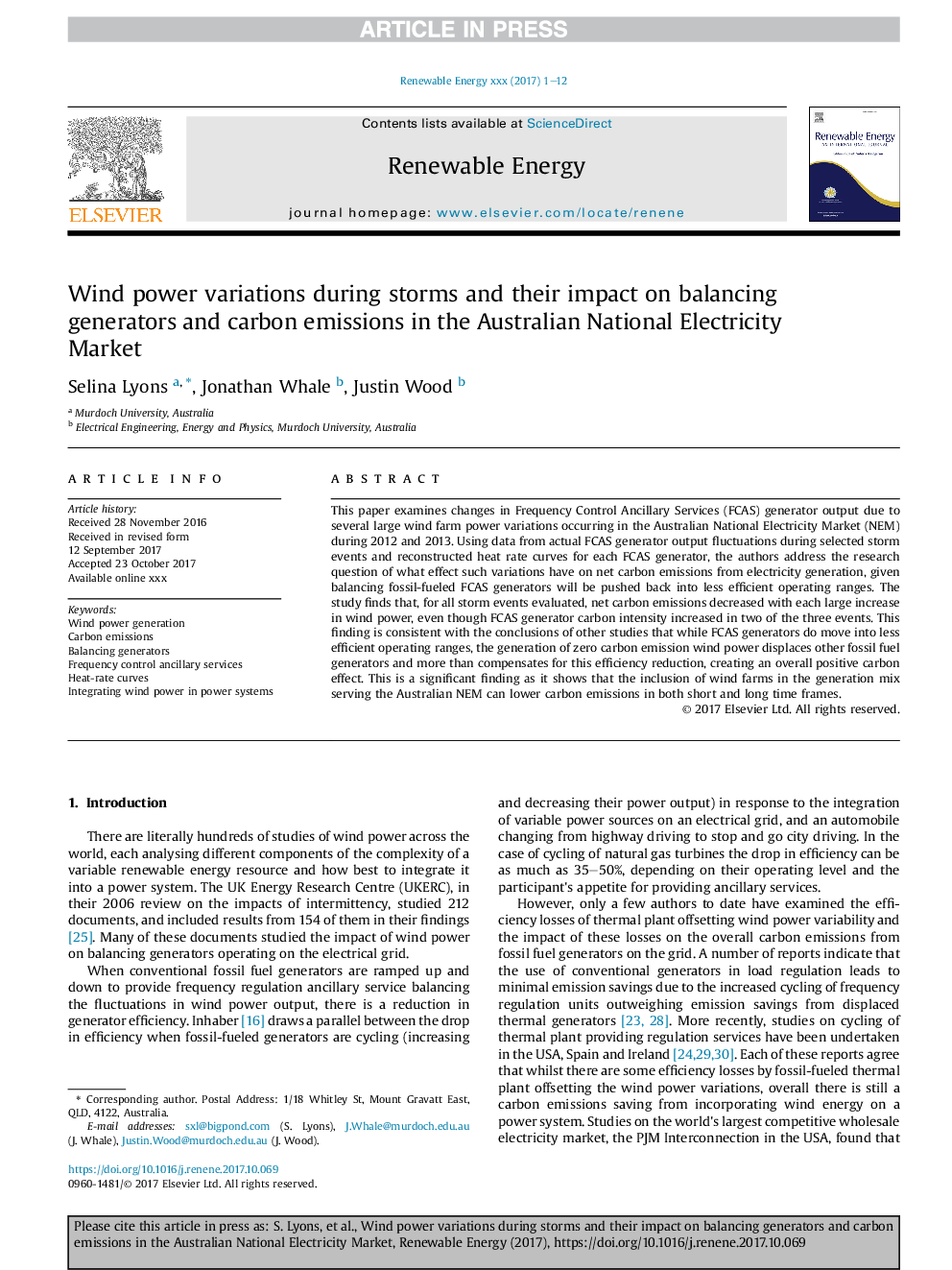| Article ID | Journal | Published Year | Pages | File Type |
|---|---|---|---|---|
| 6765189 | Renewable Energy | 2018 | 12 Pages |
Abstract
This paper examines changes in Frequency Control Ancillary Services (FCAS) generator output due to several large wind farm power variations occurring in the Australian National Electricity Market (NEM) during 2012 and 2013. Using data from actual FCAS generator output fluctuations during selected storm events and reconstructed heat rate curves for each FCAS generator, the authors address the research question of what effect such variations have on net carbon emissions from electricity generation, given balancing fossil-fueled FCAS generators will be pushed back into less efficient operating ranges. The study finds that, for all storm events evaluated, net carbon emissions decreased with each large increase in wind power, even though FCAS generator carbon intensity increased in two of the three events. This finding is consistent with the conclusions of other studies that while FCAS generators do move into less efficient operating ranges, the generation of zero carbon emission wind power displaces other fossil fuel generators and more than compensates for this efficiency reduction, creating an overall positive carbon effect. This is a significant finding as it shows that the inclusion of wind farms in the generation mix serving the Australian NEM can lower carbon emissions in both short and long time frames.
Related Topics
Physical Sciences and Engineering
Energy
Renewable Energy, Sustainability and the Environment
Authors
Selina Lyons, Jonathan Whale, Justin Wood,
